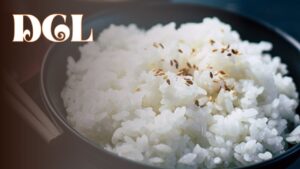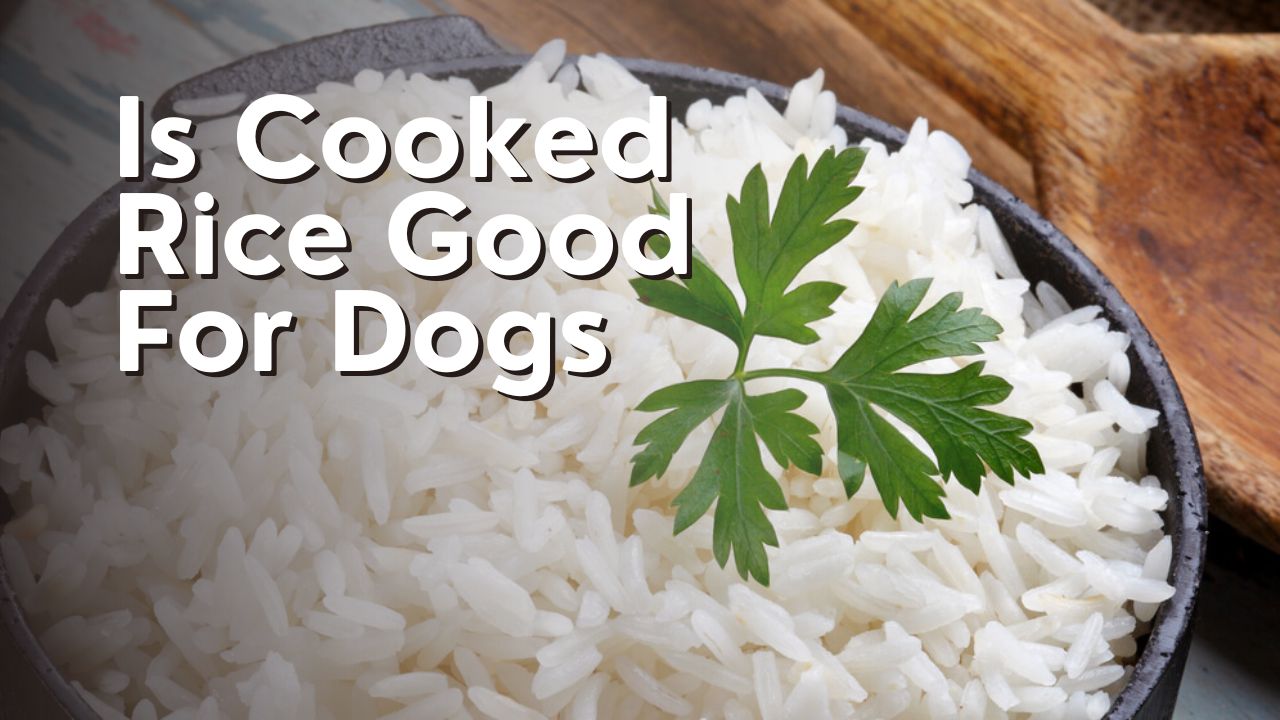Is cooked rice good for dogs?
As a pet owner, I’ve often wondered about the nutritional benefits and potential risks of feeding my furry friend this popular grain.
In this article, I will explore the advantages of cooked rice for dogs, such as its digestibility and fiber content.
I’ll also discuss the importance of portion control and offer alternative grain options.
By the end, you’ll have the information you need to make an informed decision about incorporating cooked rice into your dog’s diet.
- Nutritional Benefits of Cooked Rice for Dogs
- Digestibility and Fiber Content in Cooked Rice
- Cooked Rice as a Source of Carbohydrates for Dogs
- Potential Risks of Feeding Cooked Rice to Dogs
- Feeding Cooked Rice as a Supplement to a Balanced Diet
- Tips for Cooking and Preparing Rice for Dogs
- Portion Control and Feeding Guidelines for Cooked Rice
- Alternative Grains and Carbohydrate Sources for Dogs
- Consulting with a Veterinarian for Individualized Dietary Recommendations
- Conclusion: Making an Informed Decision about Feeding Cooked Rice to Your Dog
- Frequently Asked Questions
- Conclusion
Nutritional Benefits of Cooked Rice for Dogs
Cooked rice is good for dogs because it provides them with essential nutrients. As a dog owner, I know how important it is to ensure that my furry friend is getting a balanced diet. Rice is an excellent source of carbohydrates, which is a vital energy source for dogs. It is easily digestible and can help regulate their blood sugar levels. Additionally, rice contains essential vitamins and minerals, such as iron and B vitamins, that contribute to a dog’s overall health and wellbeing.
One of the great things about cooked rice is that it is a bland food that is gentle on a dog’s stomach. If your dog is experiencing digestive issues, such as an upset stomach or diarrhea, feeding them cooked rice can help soothe their digestive system. It can also be a great option for dogs with food allergies or sensitivities, as it is a hypoallergenic food that is unlikely to cause adverse reactions.
When feeding cooked rice to your dog, it is important to remember a few key points. Firstly, ensure that the rice is fully cooked and cooled before serving it to your dog. Secondly, avoid adding any seasonings or spices, as they can be harmful to dogs. Lastly, always consult with your veterinarian before making any significant changes to your dog’s diet.
In conclusion, cooked rice is a nutritious and beneficial addition to a dog’s diet. It provides them with essential nutrients, is gentle on their stomach, and can help alleviate digestive issues. However, it is crucial to feed it in moderation and consult with a veterinarian for personalized dietary recommendations.

Digestibility and Fiber Content in Cooked Rice
When dogs consume rice, it can provide them with easily digestible carbohydrates and a decent amount of dietary fiber. Cooked rice is a great option for dogs with sensitive stomachs or those recovering from an illness. The process of cooking rice breaks down the complex carbohydrates into simpler forms, making it easier for dogs to digest and absorb the nutrients. This can be especially beneficial for dogs with digestive issues or those who have trouble processing certain foods.
Moreover, cooked rice contains a good amount of dietary fiber, which plays a crucial role in maintaining a healthy digestive system for dogs. Fiber adds bulk to their stools, promoting regular bowel movements and preventing constipation. It also helps regulate blood sugar levels and can contribute to weight management, as it provides a feeling of fullness without adding excessive calories.
However, it’s important to remember that rice should be given to dogs in moderation and as part of a balanced diet. While it offers nutritional benefits, it should not replace a complete and balanced dog food. Additionally, it’s essential to consult with a veterinarian before introducing any new food into your dog’s diet, especially if they have specific dietary restrictions or health conditions.
Cooked Rice as a Source of Carbohydrates for Dogs
To ensure a balanced diet for your pup, it’s important to consider cooked rice as a valuable source of carbohydrates. Carbohydrates play a crucial role in providing energy for dogs, especially active ones like mine. Cooked rice is easily digestible for dogs and can be a great addition to their meals.
But how does cooked rice compare to other carbohydrate sources? Let’s take a look at this table:
| Carbohydrate Source | Fiber Content |
|---|---|
| Cooked Rice | 1.4 grams/100g |
| Sweet Potato | 3 grams/100g |
| Whole Wheat Pasta | 3.9 grams/100g |
| Quinoa | 7 grams/100g |
| Oatmeal | 10.6 grams/100g |
As you can see, cooked rice may not have the highest fiber content compared to other options like quinoa or oatmeal. However, it still provides a decent amount of fiber at 1.4 grams per 100 grams. Fiber is important for maintaining good digestive health in dogs.
In conclusion, cooked rice can be a beneficial addition to your dog’s diet as a source of carbohydrates. Just remember to introduce it gradually and in moderation, as every dog is different. And always consult with your veterinarian to ensure the best diet for your furry friend.
Potential Risks of Feeding Cooked Rice to Dogs
If you’re considering adding cooked rice to your dog’s diet, it’s important to be aware of the potential risks involved. While cooked rice can be a good source of carbohydrates for dogs, there are a few things you should keep in mind.
- Digestive issues: Dogs have a different digestive system than humans, and some dogs may have trouble digesting rice. This can lead to stomach upset, diarrhea, or even more serious gastrointestinal problems.
- Allergies: Just like humans, dogs can develop allergies to certain foods, including rice. If your dog is allergic to rice, feeding them cooked rice can cause itching, skin rashes, or even more severe allergic reactions.
- Nutritional imbalance: While rice can provide carbohydrates, it lacks other important nutrients that dogs need in their diet, such as protein, vitamins, and minerals. Feeding too much rice without balancing it with other foods can lead to nutritional deficiencies over time.
Considering these potential risks, it’s important to consult with your veterinarian before adding cooked rice to your dog’s diet. They can provide guidance on how to introduce rice safely and ensure that your dog’s nutritional needs are being met.
Feeding Cooked Rice as a Supplement to a Balanced Diet
Adding cooked rice as a supplement can help provide additional carbohydrates to a balanced diet for your canine companion. Carbohydrates are an important source of energy for dogs, and rice is a safe and easily digestible option. However, it is crucial to remember that rice should only be given in moderation and as part of a well-rounded diet. While it can be a beneficial addition, it should not replace other essential nutrients that dogs need.
When feeding cooked rice to your dog, it is important to ensure that it is plain and unseasoned. Avoid adding any oils, spices, or sauces that may be harmful to your furry friend. Additionally, it is essential to cook the rice thoroughly to make it easier for your dog to digest.
Feeding cooked rice as a supplement can be especially beneficial for dogs with digestive issues or sensitive stomachs. The bland nature of rice can help soothe their stomach and alleviate any discomfort. It can also be a good option for dogs that need to gain weight or recover from an illness or surgery.
Remember to consult with your veterinarian before making any significant changes to your dog’s diet. They can provide guidance based on your dog’s specific needs and help you determine the appropriate amount of cooked rice to include in their meals.
Tips for Cooking and Preparing Rice for Dogs
Now that we know that feeding cooked rice as a supplement to a balanced diet can be beneficial for our furry friends, let’s dive into some helpful tips for cooking and preparing rice specifically for dogs.
As a responsible dog owner, I always want to ensure that the food I serve to my canine companion is safe and nutritious.
First and foremost, it’s important to choose the right type of rice. Brown rice is a fantastic option as it is rich in fiber and nutrients, unlike white rice which lacks these essential components.
Secondly, always cook the rice thoroughly, making sure it is soft and easily digestible for your dog.
When it comes to seasoning, it’s best to avoid adding any spices or flavorings. Dogs have sensitive stomachs and certain seasonings can upset their digestive system. I usually prepare plain rice for my pooch, but occasionally I’ll mix in some cooked vegetables or lean protein to add variety and nutritional value.
Lastly, be mindful of portion sizes. While rice can be a healthy addition to their diet, it should not make up the majority of their meal. It’s important to maintain a balanced diet that includes a variety of proteins, vegetables, and grains.
By following these tips, you can ensure that the cooked rice you serve to your dog is not only safe but also beneficial for their overall health and well-being.
Portion Control and Feeding Guidelines for Cooked Rice
To ensure the right amount of cooked rice is included in your dog’s diet, it’s important to follow proper portion control and feeding guidelines.
While cooked rice can be a healthy addition to your dog’s meals, it should only make up a portion of their overall diet. The exact amount of rice your dog needs will depend on factors such as their size, age, and activity level.
When it comes to portion control, it’s best to consult with your veterinarian to determine the appropriate amount of cooked rice for your dog. Generally, it is recommended to start with small portions and gradually increase the amount based on your dog’s response. It’s important to remember that rice should be considered a supplement to their regular diet, not a replacement for balanced dog food.
Feeding guidelines for cooked rice suggest that it should be served in moderation. It can be mixed with your dog’s regular food or served as a standalone meal. However, it’s crucial to avoid overfeeding as this can lead to weight gain and digestive issues. It’s also important to cook the rice plain, without adding any seasonings or sauces that may be harmful to your dog.
By following proper portion control and feeding guidelines, you can safely incorporate cooked rice into your dog’s diet and provide them with a nutritious and balanced meal. Remember to always monitor your dog’s weight and overall health, and make adjustments to their diet as necessary.
Alternative Grains and Carbohydrate Sources for Dogs
When it comes to incorporating alternative grains and carbohydrate sources into your dog’s diet, there are several options to consider.
While cooked rice is a commonly used grain for dogs, it’s important to explore other options to provide a well-rounded diet.
One alternative grain that can be beneficial for dogs is quinoa. Not only is quinoa packed with essential nutrients like protein, fiber, and vitamins, but it is also easily digestible for our furry friends.
Another option is oats, which are not only a great source of energy but also help regulate digestion and promote a healthy coat.
Sweet potatoes are a fantastic carbohydrate source for dogs as they are high in fiber, vitamins, and antioxidants. They are also low in fat, making them a great choice for dogs who need to watch their weight.
Lastly, barley is another alternative grain that can be added to your dog’s diet. It is rich in fiber and has a low glycemic index, which can help regulate blood sugar levels.
So, when it comes to choosing alternative grains and carbohydrate sources for your dog, explore options like quinoa, oats, sweet potatoes, and barley to provide a nutritious and balanced diet.

Consulting with a Veterinarian for Individualized Dietary Recommendations
If you want personalized dietary recommendations for your dog, consult with a veterinarian to ensure their specific needs are met. Your veterinarian will be able to assess your dog’s health, age, breed, and activity level to recommend the most suitable diet. Here are four key reasons why consulting with a veterinarian is important:
- Expertise: Veterinarians have extensive knowledge and experience in animal nutrition. They can provide you with accurate and up-to-date information on the nutritional requirements of dogs, including alternative grains and carbohydrate sources.
- Individualized Approach: Every dog is unique, and their dietary needs can vary. A veterinarian will consider your dog’s specific health conditions, such as allergies or sensitivities, and tailor a diet accordingly. This ensures that your dog receives the right balance of nutrients for optimal health.
- Preventive Care: A veterinarian can help prevent future health issues by recommending a diet that promotes overall well-being. They can suggest specific grains or carbohydrates that may be beneficial for your dog’s specific needs, helping to maintain a healthy weight and support their immune system.
- Monitoring and Adjustments: Regular check-ups with a veterinarian allow for monitoring your dog’s health and making any necessary adjustments to their diet. This ensures that their nutritional needs are continually met as they age or if their health condition changes.
By consulting with a veterinarian, you can provide your dog with a personalized diet that meets their specific needs, promoting their overall health and well-being.
Conclusion: Making an Informed Decision about Feeding Cooked Rice to Your Dog
In conclusion, it is important to consider all the factors discussed to make an informed decision about including cooked rice in your dog’s diet. Consulting with a veterinarian is crucial to ensure that you are meeting your dog’s specific dietary needs. They can evaluate your dog’s overall health, age, breed, and any existing medical conditions to provide individualized recommendations.
While cooked rice can be a healthy addition to your dog’s diet, it should not replace their regular balanced dog food. It can be used as a supplement or to help with certain dietary issues. However, it is essential to prepare the rice properly by cooking it thoroughly and without any added seasonings or oils. Additionally, it is important to introduce new foods gradually and monitor your dog’s reaction to ensure they tolerate it well.
Remember that every dog is unique, and what works for one may not work for another. Some dogs may have allergies or sensitivities to rice, so it is crucial to watch for any adverse reactions. If your dog experiences gastrointestinal upset or any other negative symptoms, discontinue feeding them rice and consult with your veterinarian.
Ultimately, by considering all these factors and working closely with your veterinarian, you can make an informed decision about whether cooked rice is a suitable addition to your dog’s diet.
Frequently Asked Questions
Can dogs eat uncooked rice?
Dogs can eat uncooked rice, but it’s not recommended. Raw rice is harder to digest and may cause stomach discomfort. It’s best to feed your dog cooked rice, which is easier for them to digest and provides more nutrients.
How much cooked rice should I feed my dog?
I would recommend feeding your dog cooked rice in moderation. It can be a healthy addition to their diet, providing carbohydrates and fiber. However, consult with your vet to determine the appropriate amount for your dog’s specific needs.
Are there any other grains that are safe for dogs to eat?
Yes, there are other grains that are safe for dogs to eat. Some examples include cooked quinoa, oatmeal, and barley. However, it’s always best to consult with a veterinarian before introducing new foods into your dog’s diet.
Can cooked rice cause digestive issues in dogs?
Cooked rice can cause digestive issues in dogs if given in large amounts or if the dog has a sensitive stomach. It should be given in moderation and introduced gradually to avoid any potential problems.
Should I consult with a veterinarian before adding cooked rice to my dog’s diet?
Yes, consulting with a veterinarian before adding cooked rice to my dog’s diet is important. They can provide guidance based on my dog’s specific needs and ensure it won’t cause any digestive issues.
Conclusion
In conclusion, I believe that cooked rice can be a beneficial addition to a dog’s diet. It provides essential nutrients, is easily digestible, and can serve as a source of carbohydrates.
However, it is important to consider portion control and consult with a veterinarian to ensure a balanced diet.
Additionally, alternative grains and carbohydrate sources can be explored to add variety to the dog’s meals.
By making informed decisions and prioritizing the dog’s health, cooked rice can be a safe and nutritious option for our furry friends.


